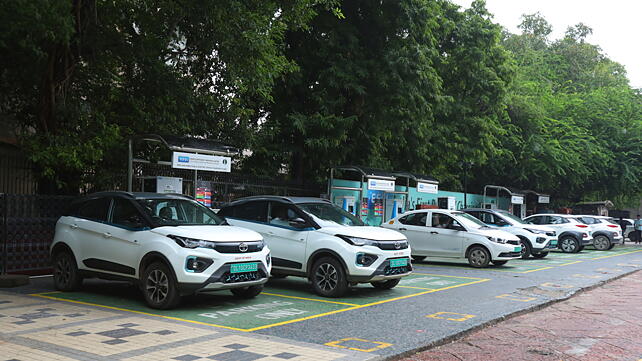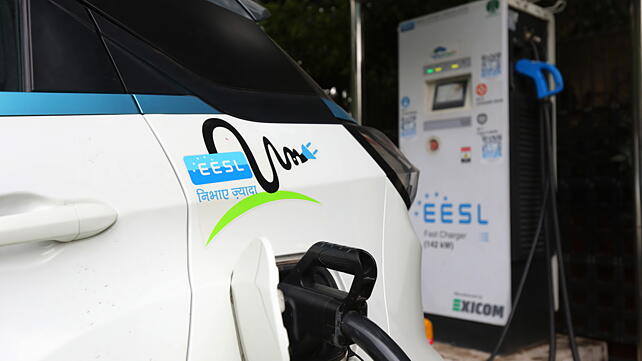
Jasmine Shah, Vice Chairman, Dialogue and Development Commission (DDC) of Delhi, has been instrumental in driving the Capital's Electric Vehicle policy. In this interview, he speaks about the substantial share of ICE vehicles in polluting Delhi’s air, the AAP government’s focus on increasing the share of EVs in Delhi’s ever-growing vehicle population, and why the Delhi EV policy has not provided any “hard” mandates through which purchase of ICE vehicles is disincentivised. Excerpts:
Which aspects of the Delhi EV policy make it different from EV policies announced by other state governments?
The Delhi Government led India with its globally progressive Electric Vehicle (EV) policy notified in August 2020. In the last 18 months, several other states have learnt from Delhi’s EV policy and have adopted similar provisions. There are five key features, which make this the first of its kind in India.
Firstly, Delhi introduced the best financial incentives such as waiver of road tax and registration fee, scrapping incentives, purchase incentives, etc. Delhi was the first State to design such lucrative incentives that have been followed by other states.
Secondly, we facilitated creation of a wide network of charging stations and battery swapping stations through low EV tariff, incentivising and creating a single-window facility for setting up of charging stations, making the cheapest EV charging available nationally and internationally. Delhi has a free open database for discovery of charging stations, an open permit system for e-autos and an exemption for e-LCVs during “no-entry” hours.
Thirdly, on the financing front, Delhi has set up a broad, non-lapsable EV fund for the implementation of the policy.
Fourthly, a State EV cell was set up for institutionalising the management and day-to-day implementation of the EV policy.
Finally, the process of formulating the policy included stakeholder consultations, which included members from the industry, civil society, government bodies, think tanks, academic institutions and the like. It is the first policy to promote battery swapping from its inception, while the Government of India, in February 2022, has only proposed to introduce such a policy.
Has the Delhi government identified vehicle categories, where conversion to electric vehicles would be faster and also more relevant with the overall policy goals?
Delhi’s vehicle profile suggests that more than 70% of the total vehicles on its roads are two- and three-wheelers. Based on this, Delhi identified two- and three-wheelers as priority vehicle segments, which are critical for achieving the target of 25% of all new registrations to be EV by 2024, set by the Delhi EV policy.
The Policy provided subsidy to 30,000 charging points that cater to the two- and three-wheeler vehicles, which were its priority segments. Another vehicle category that was recognised on the basis of its use case was last mile delivery service providers and fleet aggregators. Targeted incentives and regulatory mandates were designed specially to incentivise stakeholders towards adopting electric vehicles.

Have any targets and/ or incentives under the EV policy been tweaked, since the pandemic altered the demand scenario for all vehicle categories and also diminished the appetite for new investments?
The policy since its inception focused squarely on demand generation rather than attracting manufacturing investment. Despite the pandemic, the Delhi Government is positive that the target it has set – 25% share of EVs by 2024, from a baseline of 1.2% in 2019-20 – is ambitious, but also realistic and deliverable. The share of EVs in Delhi rose sharply to 12.5% by February 2022 as against the all-India average of 1.6% (recorded in December 2021), making Delhi the leading state in India in EV penetration.
Apart from offering purchase incentives, how is the Delhi government promoting EVs? Are all vehicles for state government officials going to be compulsorily non-ICE? What steps are being taken to raise awareness about EVs and what is the Delhi government's budget for promotion activities with respect to EVs?
Delhi Government offers various fiscal and non-fiscal incentives other than purchase incentives, which include making public charging infrastructure available at low cost, facilitating installation of charging points through a single-window process, enabling battery swapping and converting the bus fleet to electric. Delhi Government aims to switch to EVs hired and leased for all official purposes.
The SWITCH Delhi Campaign, launched by CM Arvind Kejriwal, is a milestone in itself. It comprises print, radio, TV ads and targeted outreach to RWAs, youth and corporates, which were successful in generating public interest and awareness. There is a continuous effort to retain the interest through social media engagement and the SWITCH Delhi Website (i.e. ev.delhi.gov.in).

Many industry experts have said that alongside encouraging purchase of EVs, the government needs to also give a detailed plan to disincentivise vehicles which operate on internal combustion engines (ICE). Are there any such disincentivising plans and is there any deadline by which no new ICE vehicle will be allowed to be sold/ purchased in Delhi?
In our estimate, the best disincentive to ICE vehicles is to create an economic value for the consumer in adopting EVs. Hence, our focus has been on creating a bundle of economic value with incentives such as relaxation on road tax, subsidies on purchase of EVs and its inherent low operational cost. We believe that the policy has to align with the maturity of the market, and hence it prescribes soft mandates for the adoption of EVs.
However, we cannot prescribe hard mandates unless the market is ready for it. On the basis of user-base, the draft policy for aggregators and delivery firms was designed to put certain hard mandates in place. The policy has been in the public domain for comments and suggestions. The concept of feebate has been incorporated in the Delhi EV Policy, wherein ICE vehicles incur a surcharge, which funds a high proportion of the incentives for EVs.
What non-financial incentives are being offered under the policy and what steps are being undertaken to augment infrastructure for charging and for batteries?
A key objective of the policy is to provide accessible public charging facilities within 3 km travel from anywhere in Delhi. Delhi has 597 charging stations with over 825 charging points – the highest for any city nationally, and over 165 privately operated battery swapping stations in operation. Delhi is leading the race of making public charging infrastructure available to consumers at the lowest rates by leveraging the PPP model.
The Delhi Government recently concluded the nation’s largest tender for setting up 100 EV charging stations (with 500 charging points). In partnership with the DISCOMs, the Delhi Government recently launched a single window facility to encourage installation of private EV charging points at commercial, institutional or residential locations. This has made the process much faster (within seven days), cheaper (under INR 2,500 for a slow charger) and hassle-free. The Delhi Government also provides a subsidy of up to 70% on the cost of chargers installed under this process.
Separately, Delhi is setting up a wide network of public charging stations, where charging can be done at approximately INR 2/unit, the lowest rate anywhere in the country. The target is to prioritise underserved areas of Delhi such as outer Delhi.
How much is the contribution of vehicular pollution to overall pollution metrics in Delhi and how will the focus on EVs help Delhi lessen pollution?
The entire motivation of CM Arvind Kejriwal to announce the most ambitious EV Policy by any Indian state was to strike at the heart of vehicular pollution. As per a study conducted by ARAI and TERI, vehicles are responsible for about 22-26% of overall pollution metrics in Delhi’s air. In Delhi, two- and three-wheelers together contribute to as much PM 2.5 pollution as trucks and eight times more than buses.
It was an obvious choice to prioritise two- and three-wheelers in the policy. Electrification of vehicular fleet and increased penetration of EVs across all vehicle segments and use cases along with traffic congestion management and shift from private vehicles to shared electric transport would play an important role in addressing it. Switching to EVs is a low to moderate cost strategy, which has a high impact on controlling air pollution.